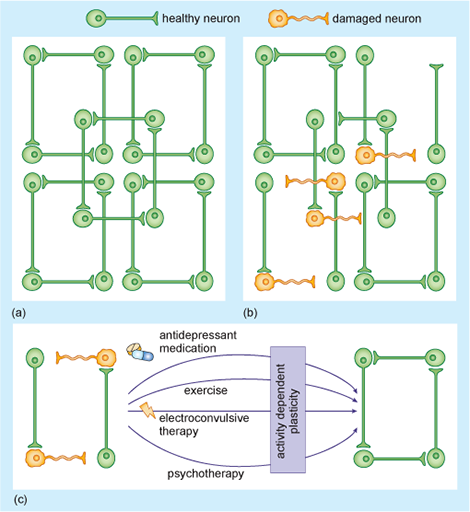5 The network hypothesis of mood disorders
While the neurotrophic hypothesis of mood disorders recognises the importance of BDNF and neurogenesis in explaining how antidepressants work, according to Eero Castre´n of the University of Helsinki, it does not go far enough in recognising the impact and significance of neurogenesis. He suggests that we need a conceptual framework to understand why neurogenesis might be important.
Castre´n (2005) quotes from the Nobel lecture given by Arvid Carlsson, the Swedish scientist who received the prize in 2000 in recognition of his work on the neurotransmitter dopamine: ‘…the brain is not a chemical factory but an extremely complicated survival machine’.
What does this mean? Castre´n argues that to understand how antidepressants work, and what their operation tells us about the brain bases of mood disorders, we need to look beyond the ‘tools’ – molecules such as BDNF – and try to understand what the tools are doing, which, he suggests, is repairing essential functional networks in the brain (Figure 12). A related point he makes is that there may be many different ‘routes’, including psychotherapy and ECT, that set in motion the plasticity processes needed to repair damaged networks (Figure 12c).

Activity 10 Antidepressants and neurogenesis
On this view, what is the significance of the results obtained by Santarelli et al. (2003) in the previous section, showing that antidepressants are ineffective if neurogenesis is suppressed?
Answer
The results are significant because they suggest that neurogenesis is essential to the action of antidepressants. Castre´n suggests the new neurons are essential as they help ‘repair’ damaged networks in the brain, in this case in the hippocampus, so the networks can function properly again.
One way of looking at the role of BDNF, then, is that it is not levels of BDNF as such that are important, or even that BDNF promotes neurogenesis. According to the network hypothesis, BDNF’s effects on behaviour will depend on where in the brain it is active, and which networks it therefore affects.
